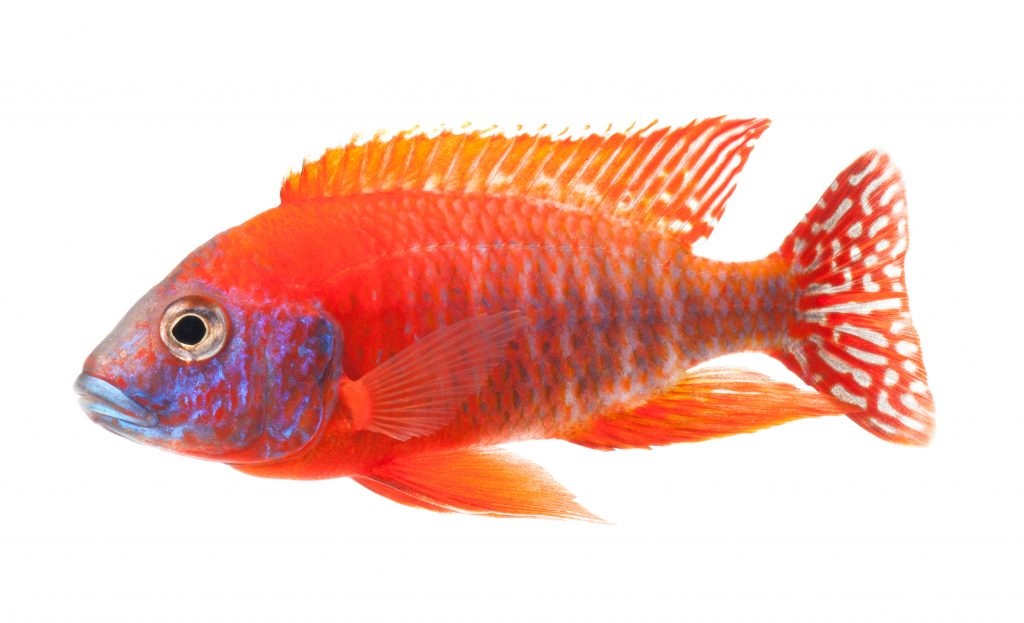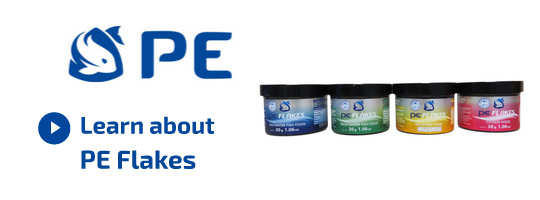African Cichlids Species
African Cichlids
African Cichlids is a broad term, used in reference to all cichlids from the continent. There are many genus representing many species of cichlids from Africa. Many of the African Cichlids popular in the aquarium trade hail from the three rift lakes, Malawi, Tanganyika and Victoria. However, there are many other riverine species that are commonly kept in fish tanks.
The Yellow Lab Cichlid (Labidichromis caeruleus) is one of the most commonly sold species of African Cichlid. Other common species include Kribensis Cichlid (Pelviachromis pulcher), Auratus Cichlid (Melanochromis auratus), Duboisi Cichlid (Tropheus duboisii) and the Frontosa Cichlid (Cyphotilapia frontosa).
Biology
African Cichlids have evolved to inhabit a wide array of habitats, and display a variety of behaviors. Many species found in the shallow waters of lake Malawi are primarily herbivorous in nature, and display a plethora of bright colors and patterning. However there also many species that inhabit the open waters and feed primarily on other fish. African Cichlids are known for their broad variety of spawning behaviors. Many species are mouthbrooders, holding the eggs and subsequent larvae in their mouth. Other species will construct nests and defend the eggs and larvae!
Captive Care
African Cichlids can make great aquarium inhabitants, provided their husbandry needs such as diet, water quality and tank space are met. As a general rule, African Cichlids prefer very hard, alkaline water with a high pH. It is always best to research the needs of the exact species you are planning to keep.
Most African Cichlids prefer a temperature range of 75 F (24C) to 82F (28C). One of the most important aspects of African Cichlid care is their social tendencies. Many species of African Cichlids are found living in high populations, and in fact thrive in heavily stocked aquariums. On the other hand, some species do much better living as pairs with a tank to themselves.
It is important to consider carefully what species of cory may be best for your aquarium. While smaller species such as the Demasoni Cichlid (Pseudotropheus demasoni) are suited to tanks as small as ten gallons, larger species such as the Frontosa Cichlid (Cyphotilapia frontosa) may be better suited to a larger tank.
Suggested Piscine Energetics Products
We suggest a diet based on Piscine Energetics Frozen Mysis, Piscine Energetics Frozen Calanus, Piscine Energetics Pellets (1mm, 2mm and 3mm) and Piscine Energetics Cichlid Flakes.
What people are saying about PE:
After feeding my seahorses your mysis for about 3 months; they are fat and happy!!! they give me baby seahorses (at least 300 ) each 14 days... So I'm very satisfied of your mysis.The frozen mysis is about 70 per cent of their diet.
Yvan Charbonneau Quebec
I am keeping these Indian mudskippers -- very cute -- about 3-4 inches long. I've been feeding them frozen bloodworm, and decided to try them on mysis. I feed them in a "shallows" in the 150 I have set up for them. The minute the mysis hit the water they were on it, frozen and all. They gorged until their little bellies were almost bursting. I have yet to see an aquatic creature that does not go absolutely nuts over PE Mysis.
David Lass Massachusetts
I picked up my Mysis today and they arrived wonderfully. All the fish I fed them to, absolutely devoured them. They are my Frontosas new favorite food. All my Discus ate them up eagerly...heads and all!! I want to thank you again for your excellent service and product.
Pierre Brenton Nova Scotia
I have a large saltwater aquarium (220 gallons) with very expensive fishes and invertebrates. I tried to feed them with your PE Mysis and they really went crazy about it. Since that time, some of my fishes refuse any other product I offer them!






